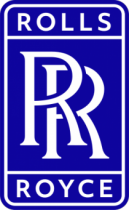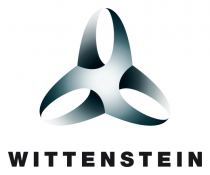Ethylene Vinyl Acetate Resins - Global Market Opportunity Analysis & Forecast, 2019-2026 - ResearchAndMarkets.com
The "Ethylene Vinyl Acetate Resins Market Global Opportunity Analysis and Industry Forecast, 2019-2026" report has been added to ResearchAndMarkets.com's offering.
According to the report, the global ethylene vinyl acetate resins market was valued at $7,442.9 thousand in 2018, and is projected to reach $12,143.2 million by 2026, growing at a CAGR of 6.3% from 2019 to 2016.
The development of the packaging & electronic industries and increase in demand for packaging materials & consumer electronics across emerging economies are the major factors that drive the growth of the global EVA resins market.
Based on type, the global ethylene vinyl acetate resins market is segmented into polypropylene (PP) vinyl acetate-modified polyethylene (low VA density), polyethylene (PE) thermoplastic ethylene vinyl acetate (medium VA density), and ethylene vinyl acetate rubber (high VA density). Polypropylene (PP) vinyl acetate-modified polyethylene (low VA density) is a copolymer, which is processed as a thermoplastic material. Polyethylene (PE) thermoplastic ethylene vinyl acetate (medium VA density) is referred to as a thermoplastic elastomer material, which is not vulcanized but has some of the properties of a rubber.
The applications covered in the study include film, foam, hot melt adhesives, wire & cable, extrusion coating, solar cell encapsulation, and others. Among these, EVA foam is widely used in the development of battle armor, due to the fact that they are more firm and robust as compared to polyurethane foam.
Depending on end user, the market is divided into automotive; packaging & paper; paints, coatings, & adhesives; electronics & electrical; pharmaceutical; footwear; photovoltaic panels; and others. In the paper & packaging industry, EVA resin is widely used owing to its properties such as resistance to crack, enhanced flexibility, low sealing temperature, superior toughness, and puncture resistance. In the footwear industry, ethylene vinyl acetate resin is used as shoe midsoles, providing enhanced cushioning and rebound.
Region wise, the ethylene vinyl acetate resin market resins market is analyzed across North America, Europe, Asia-Pacific, and LAMEA. Asia-Pacific holds the major share in the global ethylene vinyl acetate resin market resins market, due to the development of the packaging & paper, automotive sector, footwear, and photovoltaic panels & pharmaceutical industries. Increase in demand & production of packaging material, electric automobiles, and photovoltaic panels for the production of solar energy has boosted the demand for ethylene vinyl acetate resin in the Asia-Pacific region.
The market players have adopted expansion, acquisition, and collaboration as their key strategies to gain competitive advantage in this market. The key players operating in the ethylene vinyl acetate resin industry include Arkema S.A., Braskem S.A., Celanese Corporation, DOW Inc., Exxon Mobil Corporation, Formosa Plastics Corporation, Hanwha Chemical Co, Ltd., Lyondell Basell Industries N.V., Sinopec Corporation, and Lotte Chemical Corporation.
Key Findings
- The Asia-Pacific ethylene vinyl acetate resin market is predicted to hold a share of over 50.35% by 2026.
- The thermoplastic ethylene vinyl acetate type segment is expected to dominate the market, garnering a share 69% during the projected period.
- The footwear segment is projected to hold a share of over 40% by 2026.
- The foam segment is estimated to account for 60% of the share by 2026.
- The Europe ethylene vinyl acetate resin market is predicted to hold a share of over 21.66% by 2026.
Key Topics Covered
CHAPTER 1: INTRODUCTION
CHAPTER 2: EXECUTIVE SUMMARY
CHAPTER 3: MARKET OVERVIEW
3.1. Market definition and scope
3.1.1. Parent market overview
3.2. Key forces shaping ethylene vinyl acetate market
3.3. Market evolution
3.4. Pricing analysis
3.4.1. Pricing analysis by type, 2018 to 2026
3.4.2. Pricing analysis by application, 2018 to 2026
3.4.3. Pricing analysis by end user, 2018 to 2026
3.4.4. Pricing analysis by region, 2018 to 2026
3.5. Pain point analysis
3.6. Race analysis:
3.7. Value chain analysis
3.8. Impact of government regulations on global ethylene vinyl acetate resin market
3.9. Patent analysis
3.9.1. By region, 2012-2018
3.10. Market dynamics
3.10.1. Drivers
3.10.1.1. Development of the packaging industry
3.10.1.2. Economic growth and increased income level
3.10.1.3. Increased investment in solar energy generation set-ups
3.10.1.4. Rise in demand from different sectors such as footwear & foam markets
3.10.2. Restraints
3.10.2.1. Increase in threat of substitutes
3.10.2.2. Concerns associated with usage of EVA in photovoltaic packaging
3.10.3. Opportunity
3.10.3.1. Introduction of bio-based EVA resin materials
CHAPTER 4: ETHYLENE VINYL ACETATE RESIN MARKET, BY TYPE
4.1. Overview
4.2. Vinyl acetate-modified polyethylene (low VA density)
4.3. Thermoplastic ethylene vinyl acetate (medium VA density)
4.4. Ethylene vinyl acetate rubber (high VA density)
CHAPTER 5: ETHYLENE VINYL ACETATE RESIN MARKET, APPLICATION
5.1. Overview
5.2. Film
5.3. Foam
5.4. Hot melt adhesives
5.5. Wire & cables
5.6. Extrusion coating
5.7. Solar cell encapsulation
5.8. Others
CHAPTER 6: ETHYLENE VINYL ACETATE RESIN MARKET, END USER
6.1. Overview
6.2. Automotive
6.3. Packaging & paper
6.4. Paints, coatings, and adhesives
6.5. Electronic & electrical
6.6. Pharmaceutical
6.7. Footwear
6.8. Photovoltaic panels
6.9. Others
CHAPTER 7: ETHYLENE VINYL ACETATE RESIN MARKET, REGION
7.1. Overview
7.2. Market size and forecast
7.3. North America
7.4. Europe
7.5. Asia-Pacific
7.6. LAMEA
CHAPTER 8: COMPETITIVE LANDSCAPE
8.1. Introduction
8.2. Market player positioning, 2018
8.3. Key developments
8.4. Company profiles
8.5. Product mapping of top five players
8.6. Competitive heatmap
8.7. Product mapping of key players
CHAPTER 9: COMPANY PROFILES
9.1. Arkema S.A.
9.2. Braskem S.A.
9.3. Celanese Corporation
9.4. Dow Inc.
9.5. Exxon Mobil Corporation
9.6. Formosa Plastics Corporation
9.7. Hanwha Chemical Corporation
9.8. LyondellBasell Industries Holding B.V.
9.9. Sinopec Corporation
9.10. Lotte Chemical Corporation
For more information about this report visit https://www.researchandmarkets.com/r/3hxrhy
View source version on businesswire.com: https://www.businesswire.com/news/home/20190927005392/en/




